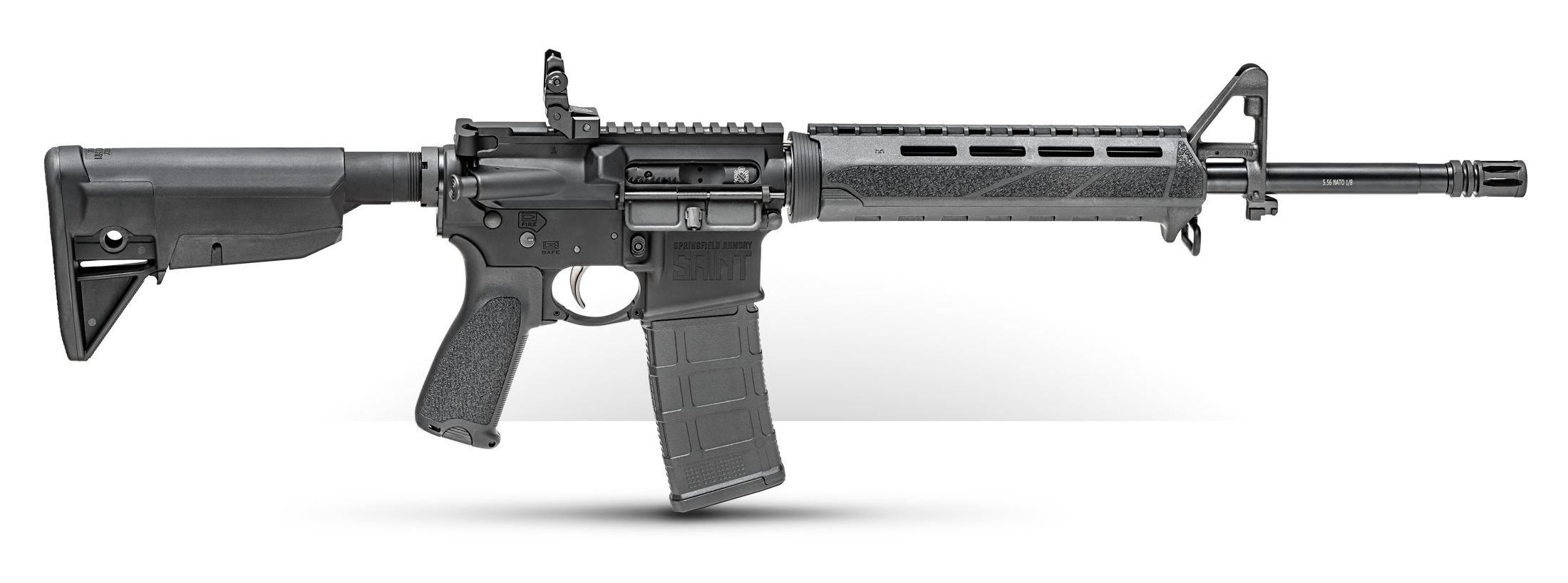Bolt Action vs. Semi-Auto Hunting Rifles: Do the Bromides Apply?
September 5th, 2022
9 minute read
They had staked out the ford at Tomate Bend not to catch smugglers, but their guide, who would cross the Rio Grande first.
It was full-dark when the Rangers heard footfalls. “Alto!” The command was met by blasts from the bandit’s Colt. A ricochet fatally pierced a lawman’s belly. Frank leaped up, firing toward the pops so fast “the flashes of his .25 [were like] the jet flame of a pear burner,” a torch to de-thorn cactus.
By match-light, the Rangers found the man, felled by Frank’s self-loading rifle.
It was 1918. Frank Hamer had been in and out of the Texas Rangers since enlisting in 1906 — the year Remington introduced his Model 8 autoloader. Though for law enforcement the state had replaced its lever-action 1873 Winchesters with powerful, box-fed 1895s, Frank would use autos into the ’30s, taking down Bonnie Parker and Clyde Barrow with the same model in .30 Remington.
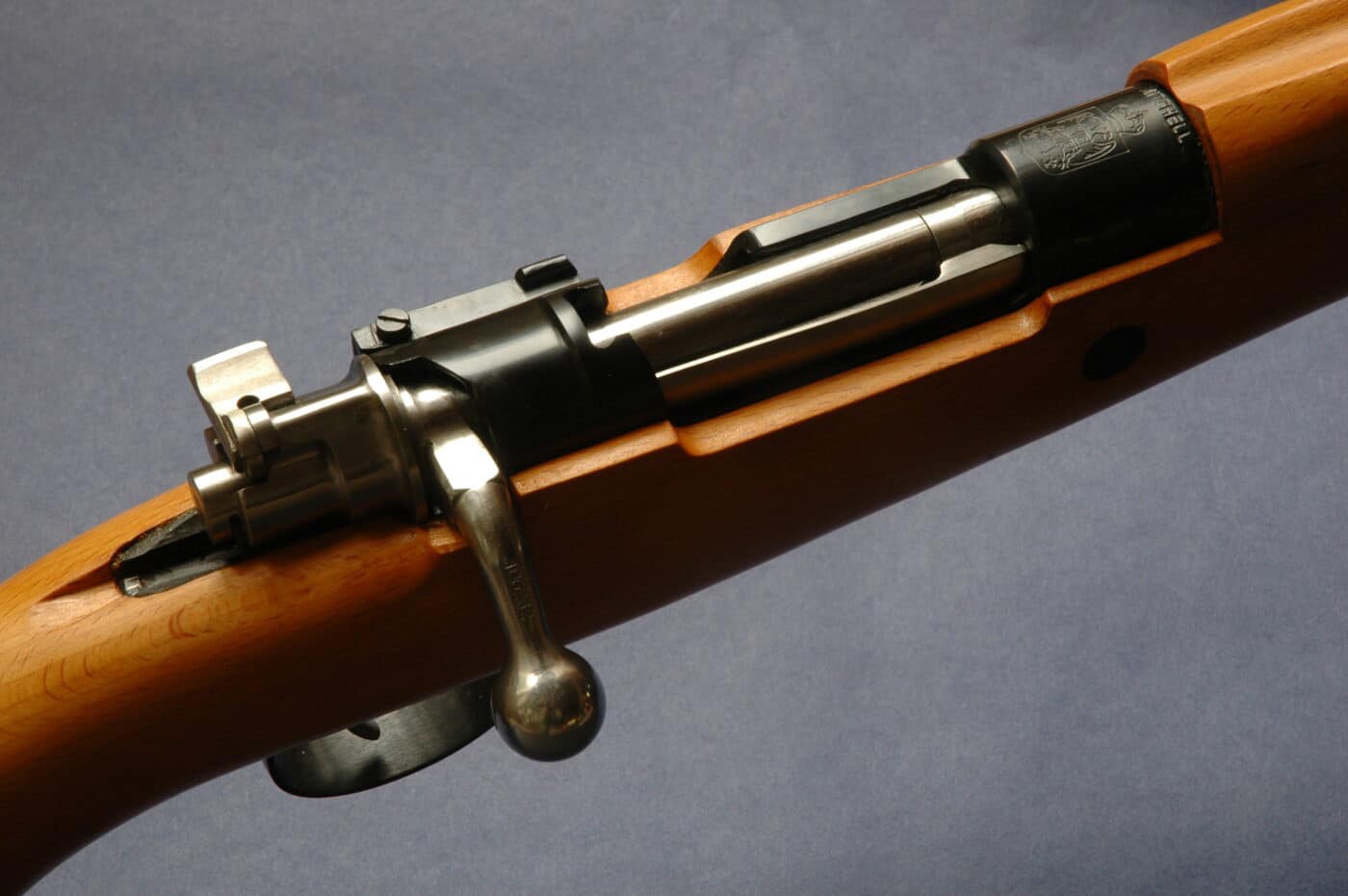
The Model 8 was our first commercially successful self-loading centerfire. In .25, .30, .32 and .35, it had a rotating bolt driven by a long-recoil mechanism. It would be replaced in 1936 by the Model 81. That year, the U.S. Army adopted the M1 Garand as its service rifle.
But hunters weren’t as quick to accept autos. Only about 60,000 Model 8s were sold during its 30 years in production. Lever-actions outsold it many times over. The shift to Mauser 1898 bolt-actions by military units worldwide, and to the 1903 Springfield stateside, led a trend toward more potent cartridges in bolt rifles in hunting camps. Post-war availability of surplus infantry arms further fueled it.
A century later, hunters still favor bolt-actions — though mechanically, autos are leagues ahead of where they were then. They’re gas-driven and fire powerful, flat-shooting cartridges. The .25 Remington was loaded to a pressure of about 35,000 psi. Self-loaders now cycle ammunition generating 65,000.
Bolt Action vs. Semi-Auto: A New Era?
U.S. Army adoption of the Garand, then the M14 in the 50s and M16 in the 60s triggered a surge in use of autoloaders for competition and hunting. More recently, Springfield Armory has fed that demand with its M1A, a civilian form of the M14, and its SAINT, among the best of now-myriad AR-15 rifles. Every major ammo company has worked to upgrade .223/5.56 NATO loads and add new ones. No other round begs a wider range of bullet weights (35 to 80 grains) or rifling spin (one turn in 7 inches to 1-in-14!). The SAINT’s 1-in-8 twist works with many bullets, including long, heavy hollowpoints for hits out yonder.
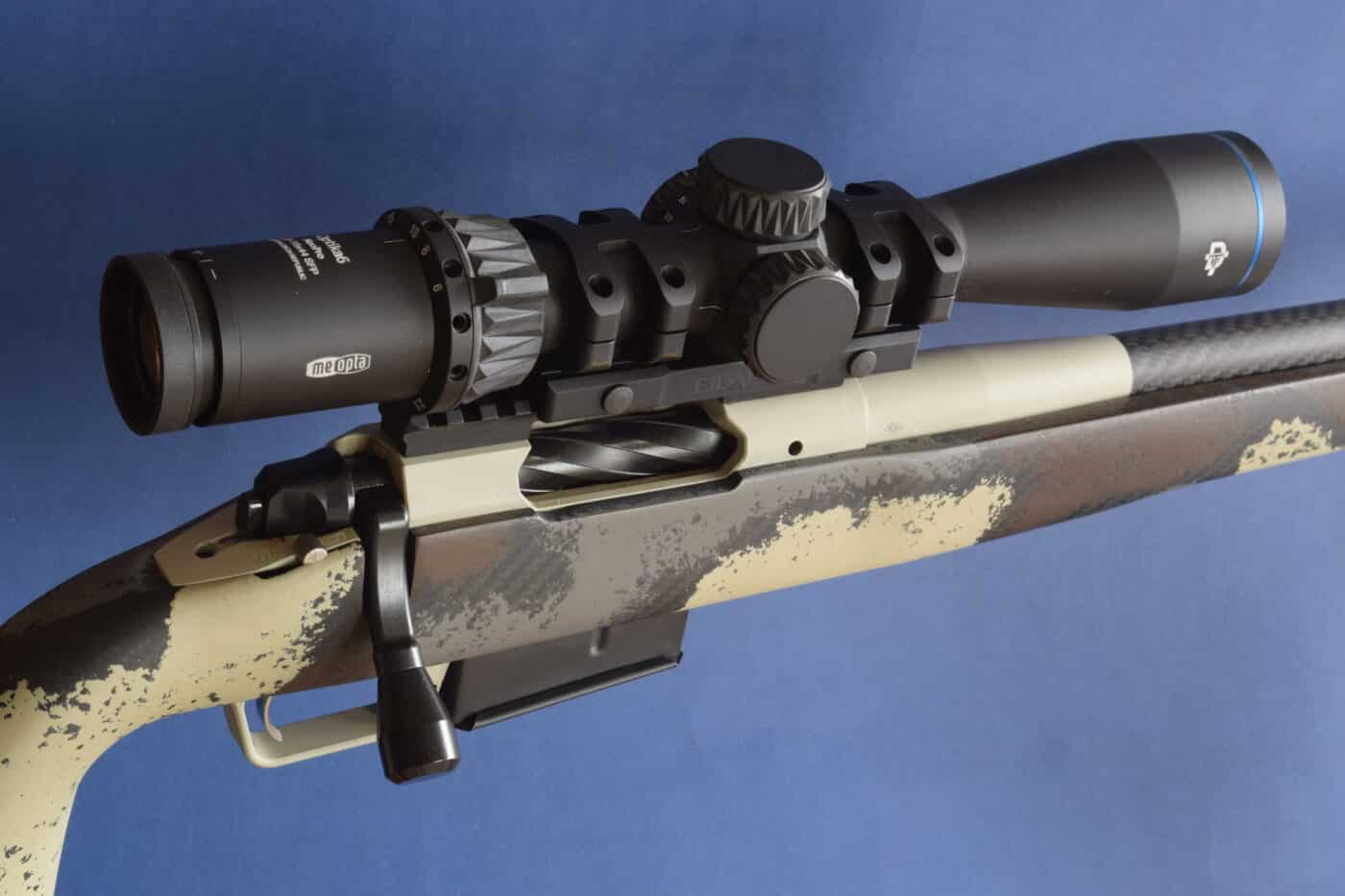
Early self-loaders weren’t drilled to accept riflescopes needed for deer hunting, and installing optics could be expensive. Most hunters were satisfied with iron sights, as autos were typically used at woods ranges. Besides, those with recoiling barrels, like Remington Models 8 and 81, couldn’t match the accuracy of rifles with action and barrel in solid union. But modern gas-operated rifles like the M1A and SAINT are both more accurate and easily scoped. The M1A Scout Squad has a short rail forward of the receiver for an intermediate-eye-relief (IER) scope. The SAINT Victor’s full-length rail affords great latitude in scope position.
Hunters sweet on the lithe, scabbard-friendly profiles of lever-action carbines dismissed the first autos. But the ways hunters transport and use rifles have changed with the times. Saddle-guns have given way to truck guns. Buttstock collapsed, the SAINT Victor is just 33” long; extended, it’s 36, still 2” shy of the OAL of a lever-action carbine! Many shooters are now accustomed to steep, small grips and find lightweight ARs quick to the target.
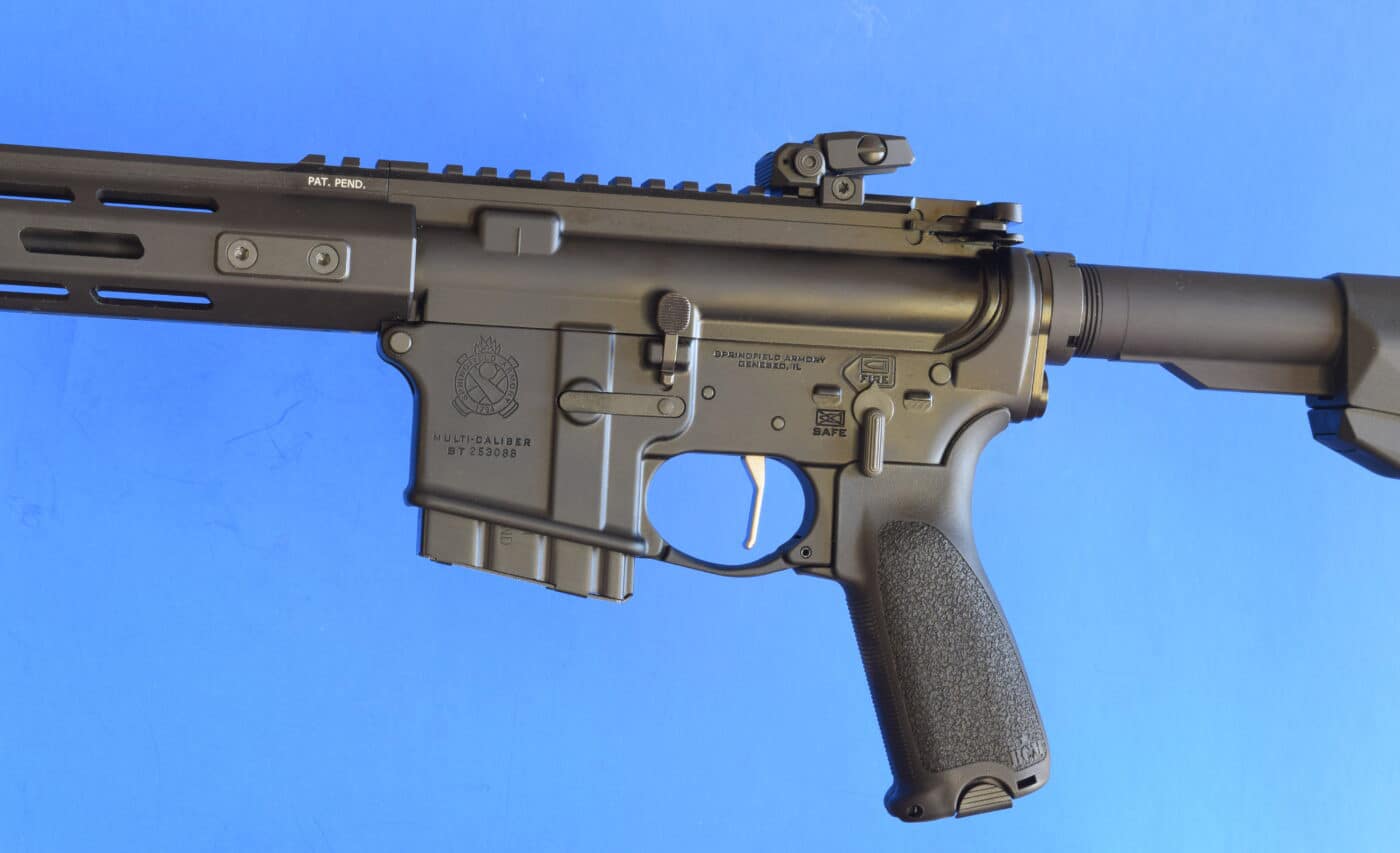
M-Lok slots on five sides of the SAINT’s 15” hexagonal handguard accept add-ons. Folding push-button sights front and rear are high enough that a hunting scope can be installed to match their axis. The dual-aperture rear sight has half-minute windage detents; the eared post up front adjusts for elevation. No lever- or bolt-actions I know of come standard with all those features! Pulling the pin on the SAINT lets the breech swing free for easy “from-the-rear” cleaning, per bolt rifles.
On the Other Hand…
The AR-15’s signal flaws are the size and shape of its action, the very design elements separating it from its military forebears. Light weight and the vertical grip make it easy to control from unsupported positions. An AR-15 can be even be pointed and fired with one hand. (Try that with an M1 Garand!) But such agility exacts a cost in cartridge size and bullet energy.
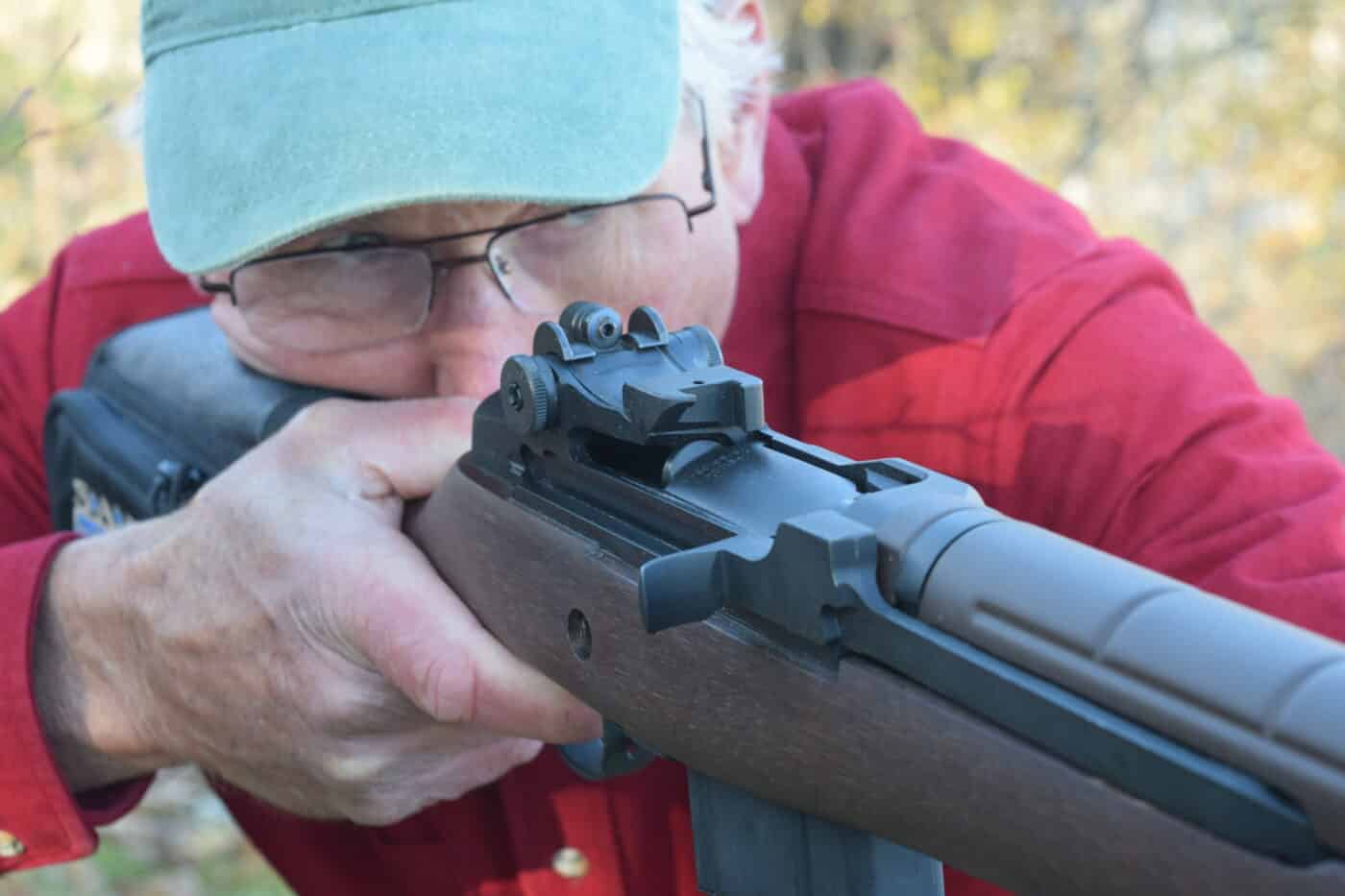
But elk, mountain goats and grizzly bears are not easily felled. In cover under field conditions, any second chance can vanish during recoil. The Garand chambered the .30-06, the most widely used hunting round of its century in North America. Factory-loaded 165- and 180-grain bullets can bring 3,170 ft-lbs of energy out the muzzle, a ton to 300 yards. The burliest .223 loads register 1,400 ft-lbs at the muzzle — less than the ’06 carries to 500 yards! At 300, even the 800 ft-lbs you’ll wring from a .223 can fail on tough game because bullets weigh, at most, 75 grains.
While new hunting cartridges for AR-15s offer heavier bullets, they’re arguably all marginal for animals bigger than deer.
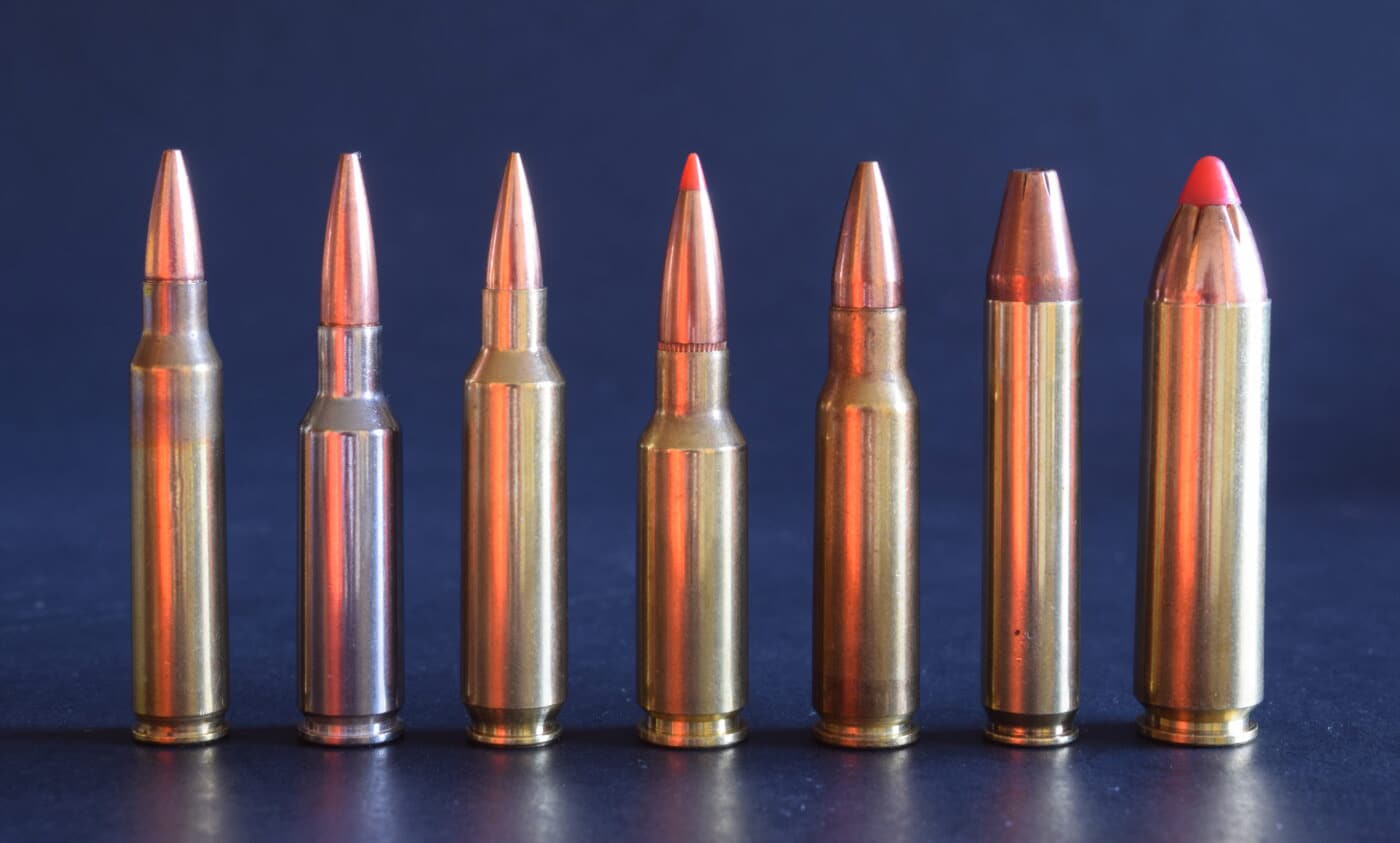
“Well,” you could say, “a 7.62mm AR fires the powerful .308.” Yes, but that AR’s action is larger. Hunters often walk and/or wait many hours to earn one shot. A rifle’s heft and shape both affect how it “carries.” Ordinarily, I hang my rifle on my right shoulder, muzzle up, or cradle it in the crook of my left arm. Straight, slim-waisted, iron-sighted rifles feel good in either place, also in my right fist. To shield the action from rain or snow, I tuck it to my side under my right arm.
Even a lightweight AR-15 like a 6½-lb. SAINT doesn’t yet feel good to me in any of those positions. The vertical grip and magazine fight every option save the tuck. Sorry, AR fans, but a 7.62mm AR beats me up until I have it in firing position. A rifle of traditional profile doesn’t prod me at every step. Even a 9¼-lb. Springfield M1A is a cheerful companion. And it’s barreled for two excellent big game cartridges.
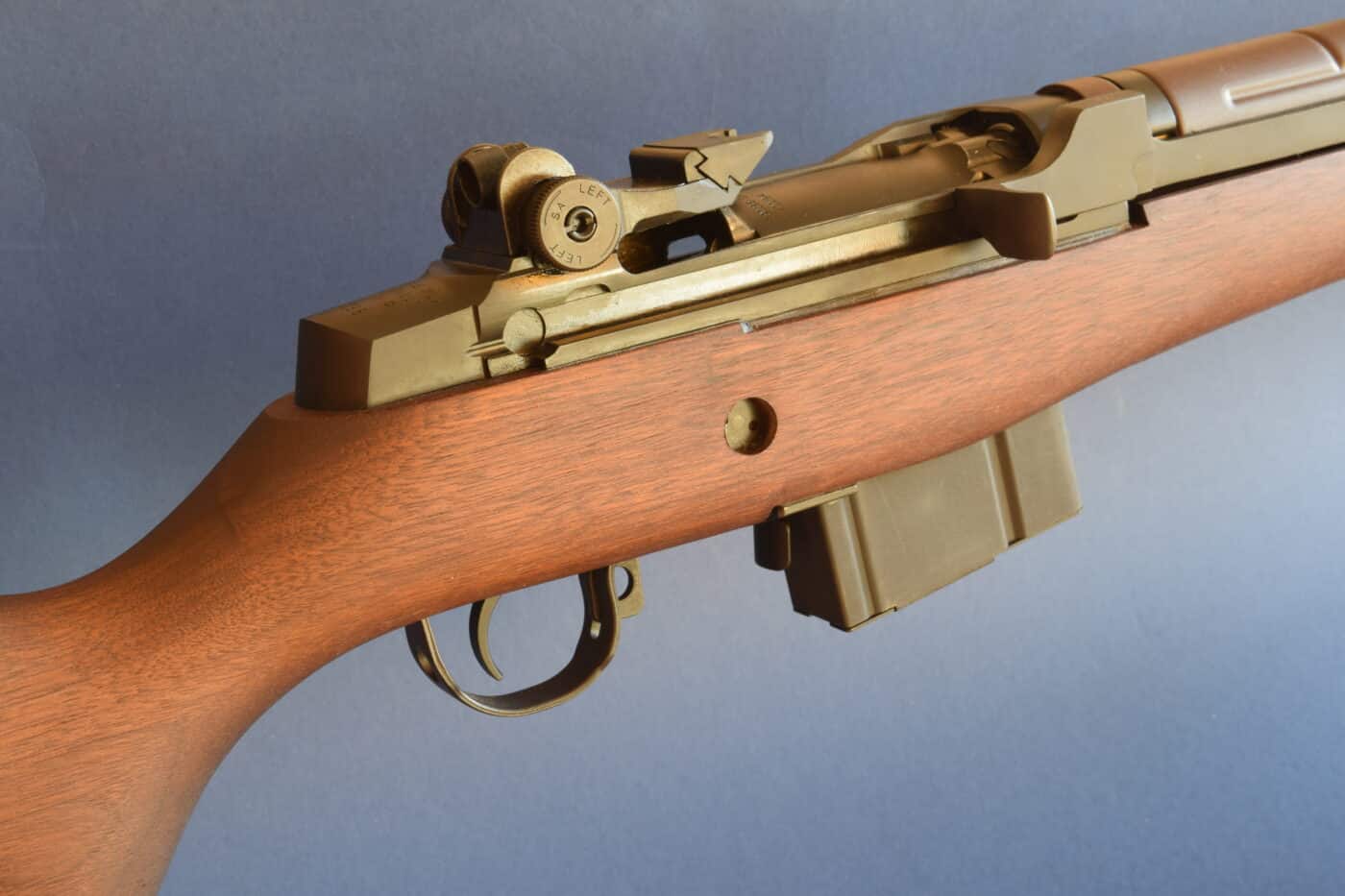
The .308, introduced in 1952, is essentially a short-action .30-06. Hunting bullets lag the ‘06’s by about 100 fps and exit with up to 2,950 ft-lbs of energy. They can bring 1,800 to 300 yards — a lethal blow to the vitals of any North American game. The 6.5 Creedmoor came from the shorter .30 T/C. Introduced by Hornady in 2009 as a target and hunting round well-suited for long-range bullets, the 6.5 CM sends a 143-grain ELD-X bullet at 2,700 fps. Its efficient shape holds velocity well, and it’s still clocking nearly 2,300 fps at 300 steps, packing a payload of 1,650 ft-lbs. Light recoil and excellent accuracy from factory loads make the 6.5 CM a top pick in 1,000-yard matches, as well as the hunting field.
The numerous M1A variations listed by Springfield include walnut and synthetic-stocked variations. My pick is the “loaded” version with walnut. The air-gauged barrel is rifled 1-in-11, the two-stage trigger tuned for a 4½-lb. break. For some inexplicable reason, I like the feel of an M1A. Its excellent sights (.0595 hooded rear aperture, .062 front blade) absolve me of adding a scope. With those sights and Hornady 150- and 168-grain .308 Match loads, I printed .9 and 1.0-inch three-shot groups in recent range trials. My eyes can’t do much better! From a solid position, these sights suit the M1A for 250-yard shots.
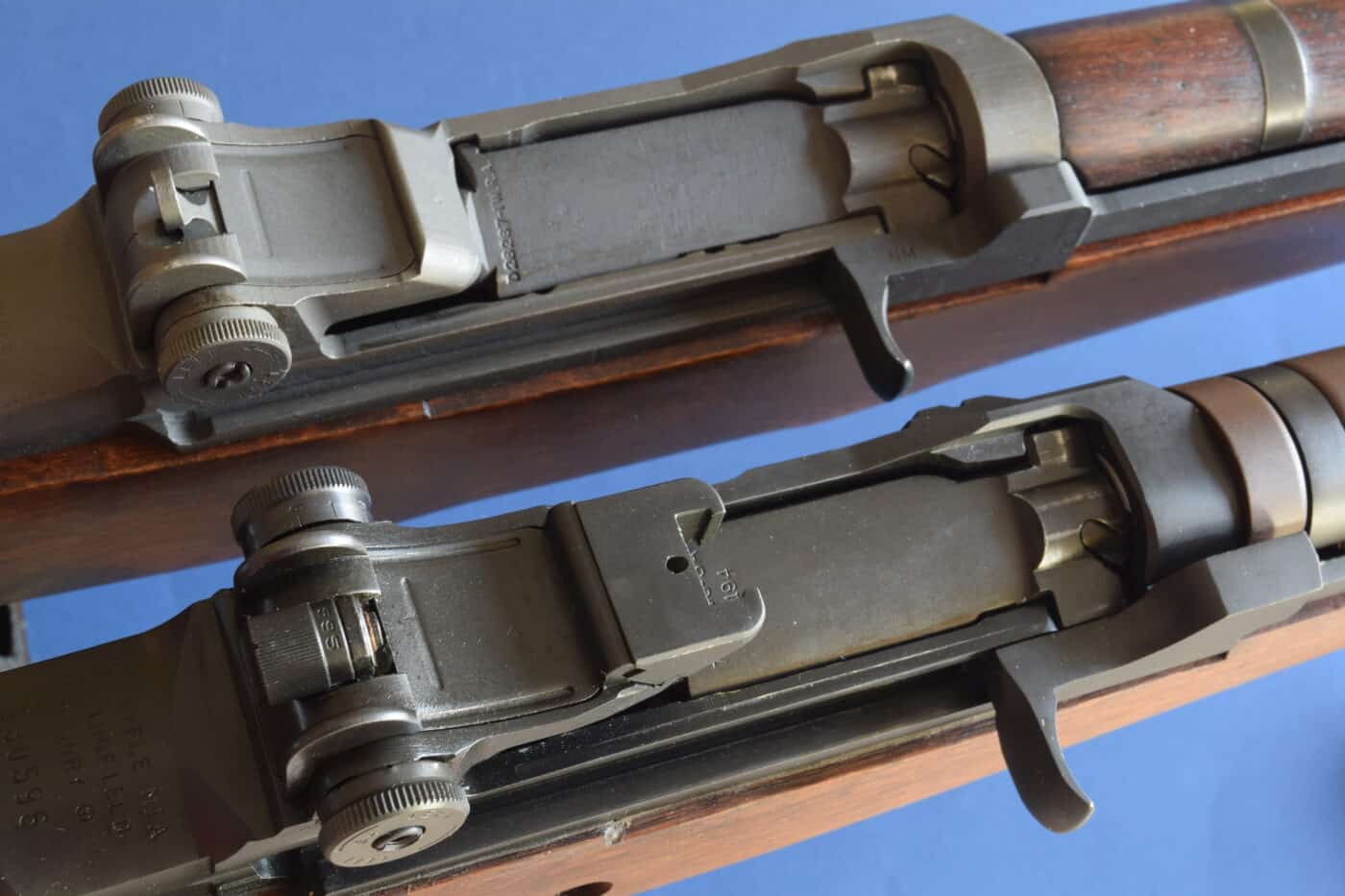
The M1A is a sturdy rifle that begs no coddling. Its bolt slams home with the ka-chunk of a vault door. Its mass and gas mechanism mitigate recoil. From field positions, the muzzle hops; the butt bumps gently against your clavicle. Then, magically, the sights are aligned again, for another quick press of the trigger. Firing this rifle is fun! While few hunters use an M1A, you might find it appealing, especially if you share my affinity for iron sights!
Which Can Perform?
Early concerns about the reliability of autos don’t apply to the likes of the M1A and the SAINT. So why do most hunters still favor bolt rifles?
Cost is one reason. Bolt-action centerfires are cheaper to build than self-loaders or lever-actions. An entry-level turn-bolt can be had for around $400. Autos now can start in four figures. Also, a bolt-action is easy to understand. Anyone can pull its bolt to check the bore or fix a minor feeding problem. Field-stripping an AR is not difficult; but neither is the task intuitive.
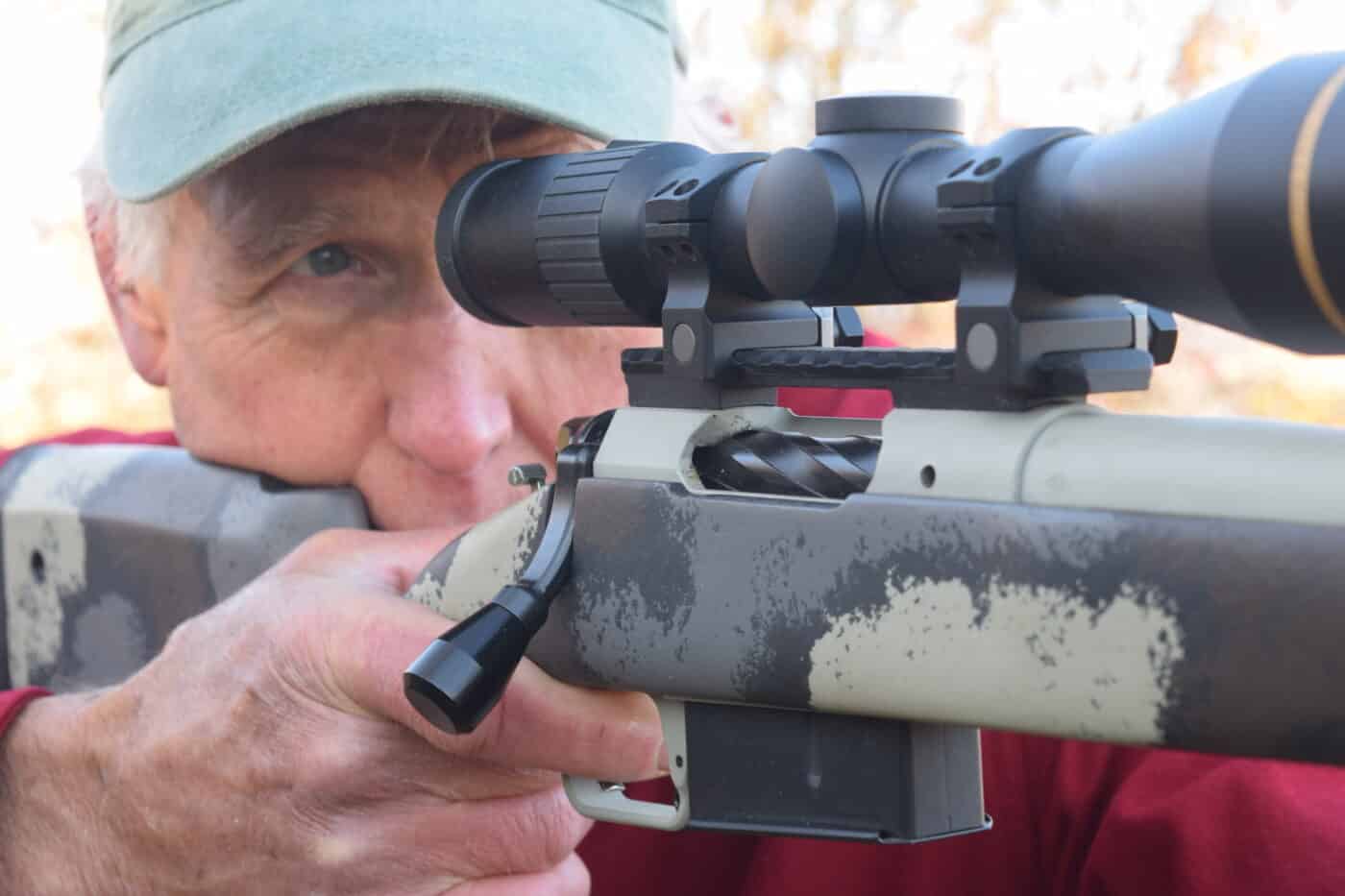
The most accurate rifles are bolt-actions. During a 2007 IBS (Benchrest) 1,000-yard match, Tom Sarver sent five bullets into a 1.403” group — .14 minute of angle! In the Light Gun class, it trumped Rich DeSimone’s 1.546” knot, shot five years earlier and then thought untouchable. (Of course, bolt-action hunting rifles don’t claim such accuracy, and few hunters could tap it if they did. Verily, a rifle that shoots into an inch at 100 yards shoots tighter than most shooters can hold under hunting conditions.)
Trigger pull affects your accuracy. Triggers on autos can’t match the best in bolt rifles. The most recent AR on my bench has a rough 6-lb. trigger. That on an aging, unmodified 03A3 Springfield bolt rifle breaks smoothly at 4 lbs. The 2½-lb. pull I like on hunting rifles comes easiest on turn-bolts.
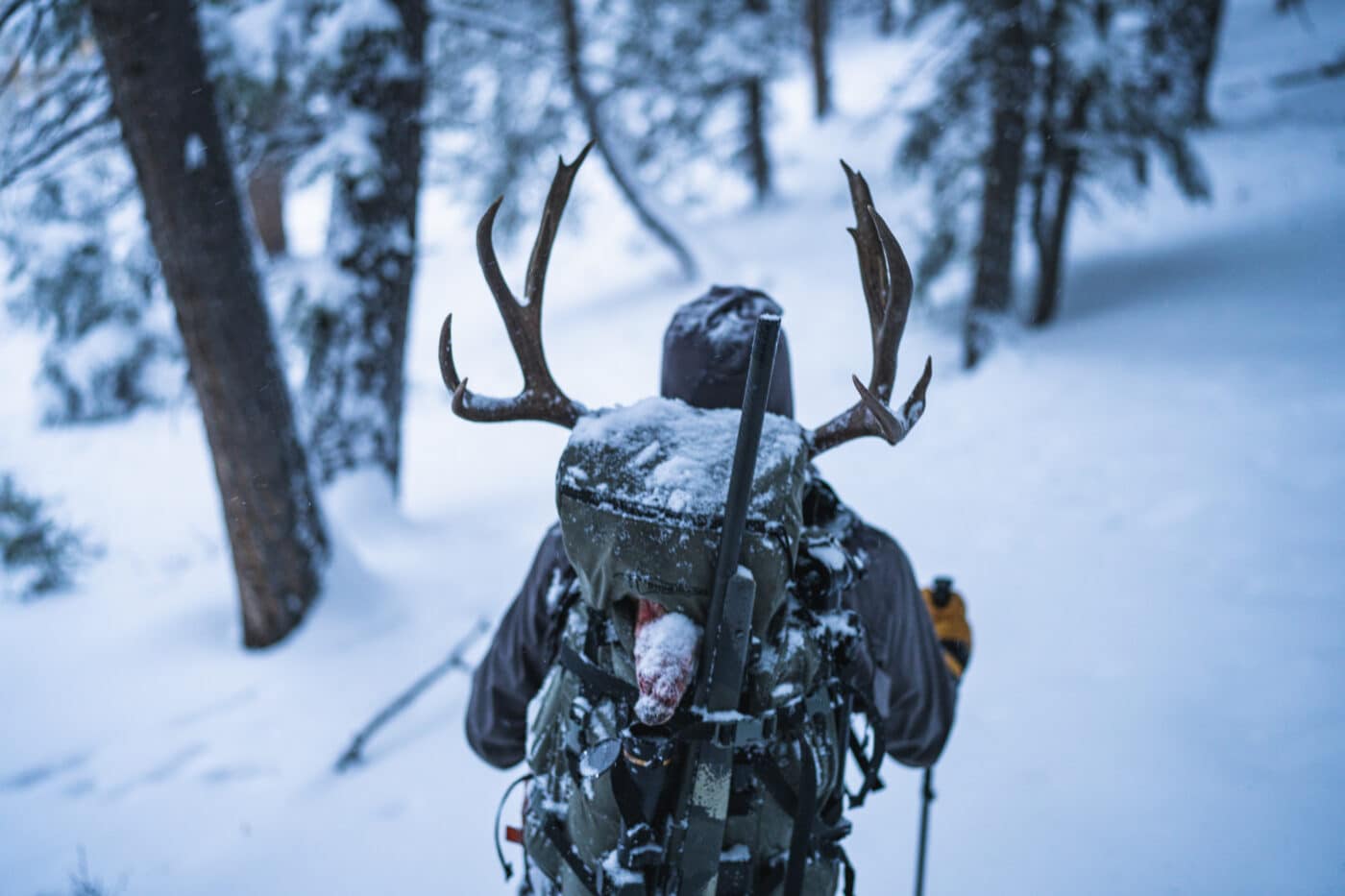
In brutal environments, a bolt-action is comforting. Sand, snow and other debris can be brushed from the bolt and its race, the bolt removed to melt ice under your coat. When there’s no chance to tidy up for a shot, your only concern is the striker’s fall — not on bolt movement triggered by it.
Chambering a slightly oversize case or pulling a sticky one that coughed up a red-line handload in tropical heat, you’re best served by a bolt rifle. Leveraged by the bolt knob, and inspired by game about to charge or vanish, your hand has great power. A little too much ice, dust or case expansion may not permit springs or a quick thrust from gas or recoil to turn multiple lugs on steep camming surfaces.
Bolt-actions can best handle big, potent cartridges. While self-loaders have been barreled to the likes of Winchester’s .338, these haven’t sold well. In autos, power quickly adds component weight.
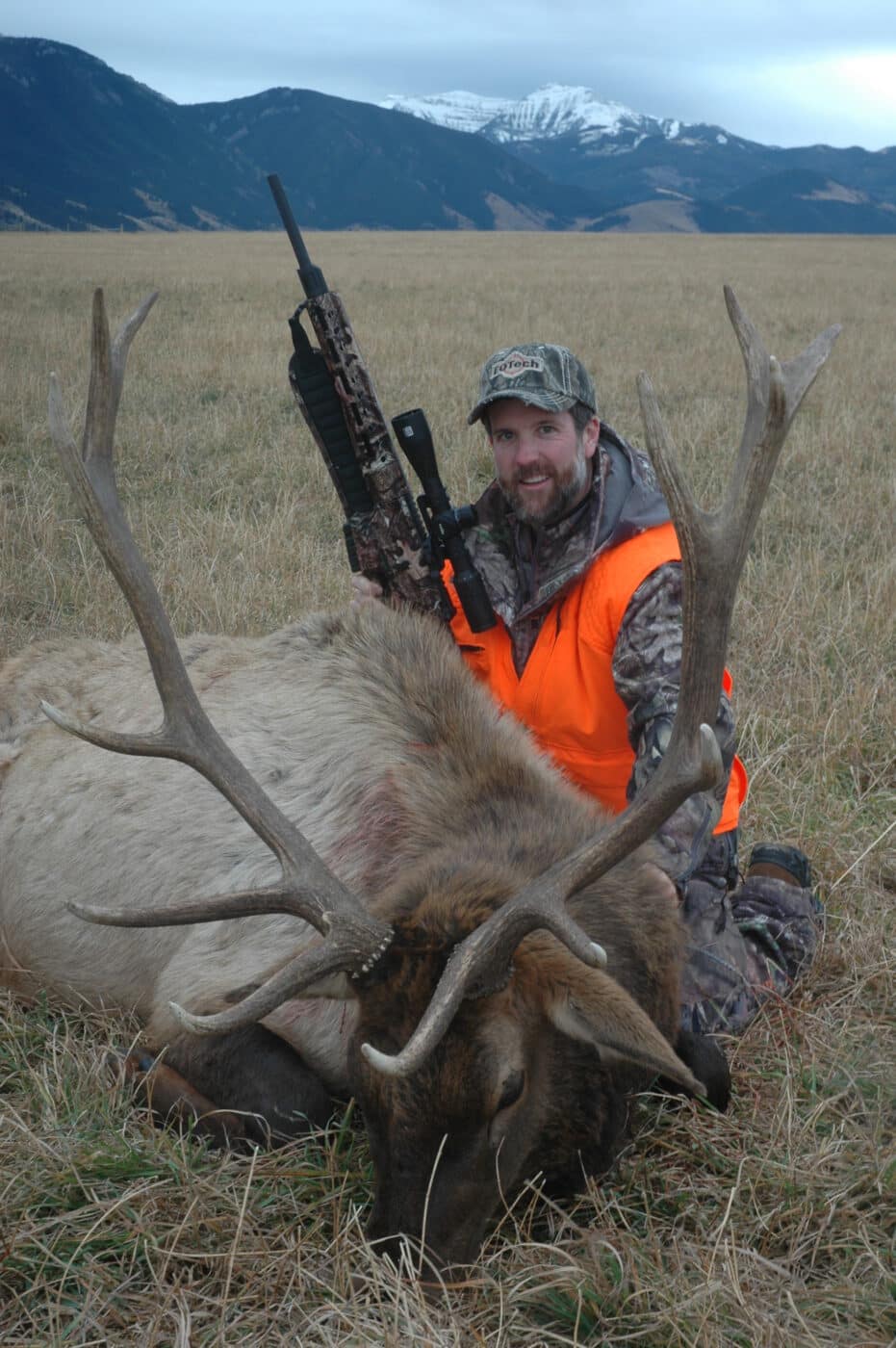
Lastly, bolt rifles have most ably pioneered designs and materials that serve hunters. Carbon-fiber (CF) stocks and barrels are quickly and inexpensively fitted to bolt-actions. Most new cartridges, factory-loaded and wildcat, are for bolt rifles. They’re easy to re-barrel and re-chamber, with no gas-metering or recoil-spring issues or rim requirements, and often without magazine tweaks.
Conclusion
The market has followed hunters’ affinity for bolt rifles. Even Springfield Armory, whose SAINT and M1A autos have defined its focus, has entered the competitive bolt-action field. Its Waypoint 2020 is a “cross-over” rifle — for hunters and for shooters punching long-range steel — in .308, 6mm CM, 6.5 CM and 6.5 PRC. The action shares the Remington 700’s footprint. The spiral-fluted, twin-lug bolt has dual cocking cams for an easy lift. A TriggerTech trigger adjusts down to 2½ lbs. The two-position safety permits bolt manipulation when “on.” Springfield shaved lock time to a lightning-quick 1.9 milliseconds. Receiver, bottom metal, barrel shank and brake are Cerakoted. The Waypoint’s carbon fiber stock is pillar-bedded and weighs less than 2 lbs. A carbon fiber-wrapped barrel is also offered.
Such rifles still beat autoloaders for most hunting, when one hard, well-placed blow properly ends the drama. When it doesn’t, well, a bolt can be run in recoil. But don’t feel like you’d be shortchanged if you choose to run a semi-auto!
Editor’s Note: Be sure to check out The Armory Life Forum, where you can comment about our daily articles, as well as just talk guns and gear. Click the “Go To Forum Thread” link below to jump in!
Join the Discussion
Featured in this article
Continue Reading
Did you enjoy this article?

 85
85





